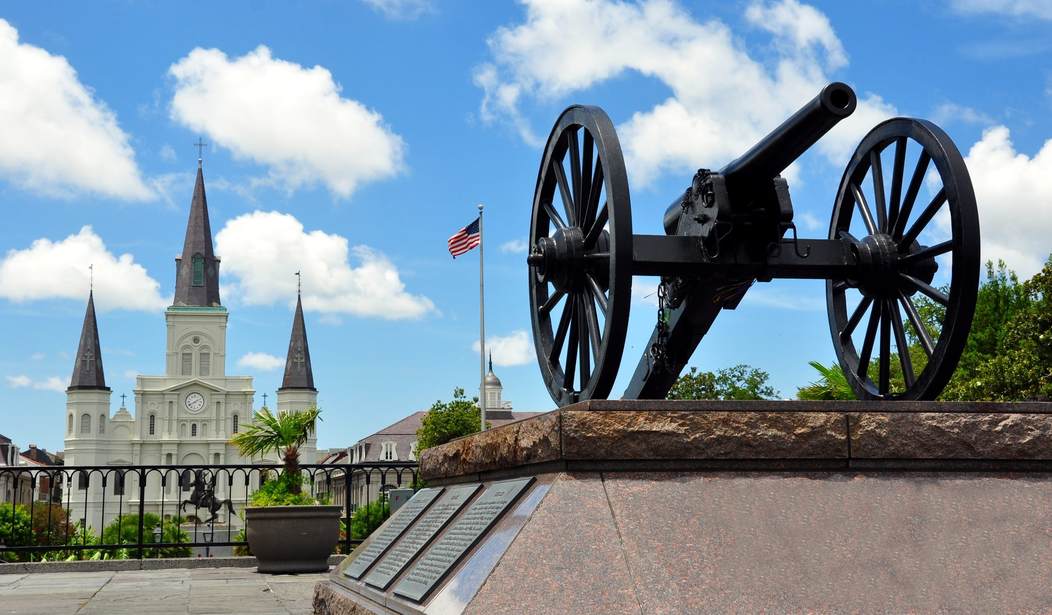New Orleans Mayor Mitch Landrieu told the New Orleans City Council they should not have a 60-foot tall statue of General Robert E. Lee, pointing in the direction of the invading Union Army, as a symbol of their city in the 21st century.
“New Orleanians have the power and the right to correct historical wrongs and move the city forward,” Landrieu said.
The council agreed. But tens of thousands of city residents disagreed, and they have hired attorneys to stop the city’s plan to take down Lee’s statue and three other monuments to New Orleans’ Civil War history.
“Six months ago, the mayor took it upon himself to speak for all New Orleanians. His actions divided the community,” said Tim Shea Carroll before the city council approved Landrieu’s proposal.
Carroll is the founder of one of the groups, Save Our Circle, fighting to save New Orleans’ Civil War monuments.
Over shouts from audience members who supported Landrieu’s proposal, Carroll said polls conducted by WWL-TV and The Advocate showed the removal of the statutes was a “non-issue” with voters throughout Louisiana.
Carroll urged the city council to “do what is right and heal this city” by voting to save the statutes.
Only one council member agreed with Carrol and other historic preservationists.
But New Orleans officials have been forced to delay plans to take down the Jefferson Davis, Robert E. Lee, P.G.T. Beauregard, and the Battle of Liberty Place monuments until a Jan. 14 court hearing.
The men honored by the monuments in question are no strangers to history books in America’s schools. Davis was the president of the insurgent nation that broke away from the United States. Lee and Beauregard were generals in the Confederate Army.
But the Battle of Liberty Place may not be even a footnote in most public school textbooks. The monument commemorates a failed attempt in 1874 to overthrow the Reconstruction government established by Washington after the Civil War. Former Confederate soldiers, known as the White League, led the failed coup attempt.
Landrieu was not the first mayor who tried to get New Orleans to tear down these connections with its Confederate past. Several others, including his father Moon Landrieu, tried and failed. However, New Orleans City Council members voted to support Landrieu’s plan to take down the monuments on Dec. 17.
“I want to thank the New Orleans City Council for their courageous decision to turn a page on our divisive past and chart the course for a more inclusive future. Symbols matter and should reflect who we are as a people,” Landrieu said in a statement following the city council vote that declared the statues to be public nuisances.
“These monuments do not now, nor have they ever reflected, the history, the strength, the richness, the diversity or the soul of who we are as a people and a city,” he added.
The Monumental Task Committee and three other New Orleans historic preservation organizations were granted a temporary injunction minutes after the city council approved Mayor Landrieu’s plan to take down the symbols of the Confederacy.
Pierre McGraw, the founder and president of the Monumental Task Committee, told BizNewOrleans.com it would be a mistake to judge the statutes “through a 21st-century lens” and described Landrieu’s proposal as “obscene.”
McGraw also disputed the notion that the people of New Orleans are backing the city council’s plan to move the monuments to either a park or a museum. He said donations to the MTC and membership in the Monumental Task Committee have never been higher.
McGraw complained at a press conference Dec. 8 as he submitted petitions with 31,000 signatures asking the city council not to move the statues that Landrieu had ignored efforts to sit down and talk. McGraw said he wanted to lead Landrieu on a tour of all of the statues in the city and explain their significance, before “treating him to a cold beer.”
“Instead, the mayor has chosen to railroad his ordinance through the City Council in the busy and sacred holiday season without any meaningful hearing process,” he said. “This is very worrisome.”
Landrieu started his quest to tear down the monuments in June, inspired, he said, by a conversation with jazz musician Wynton Marsalis, an African-American, who helped campaign for the removal of the Robert E. Lee statue.
Marsalis also wants the land on which the statute is located, Lee Circle, to be renamed.
“This symbolic place in our city should represent a great New Orleanian, or it should be an open space that represents our latest prevail and how people helped us, not a person who had nothing to do with our city and who indeed fought against the United States of America and lost,” Marsalis said to a WDSU-TV reporter.
Landrieu asked the city council to brand the Civil War monuments as public nuisances under the provisions of a 1993 ordinance that set up three criteria to determine if a statue or monument was too divisive to be allowed to stand.
Under the ordinance, city leaders can decide that a monument is a nuisance if it is found to be at odds with the message of equal rights under the law, if it has been or could become the site of violent demonstrations, or was found to constitute an expense to maintain that was more than its historical value. The city council then has the authority to tear it down.
During a June event meant to promote racial reconciliation, held seven days after Dylann Roof killed nine black people in a church in South Carolina, Landrieu said the Lee, Davis, Beauregard and Battle of Liberty Place monuments all failed that three-point test.
However, Landrieu stressed he was not trying to revise history or erase New Orleans’ past. He said the city had to be careful about messages expressed by monuments in the center of the city.
Landrieu said he didn’t want to destroy the monuments or hide them from public view, but he doesn’t want them to be focal points in New Orleans.
“That’s what museums are for,” he said.
Stacy Head was the only New Orleans City Council member to vote against Landrieu’s statute-removal bid. She braved the jeers of a standing-room-only-audience when she cast her “no” vote.
She argued merely removing monuments would not fix centuries of racial injustice in the South, and warned Landrieu’s proposal would never unite the city of New Orleans.
“We have all lost,” Head said. “I think all we will be left with is pain and division.”









Join the conversation as a VIP Member